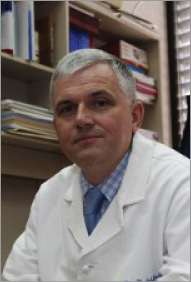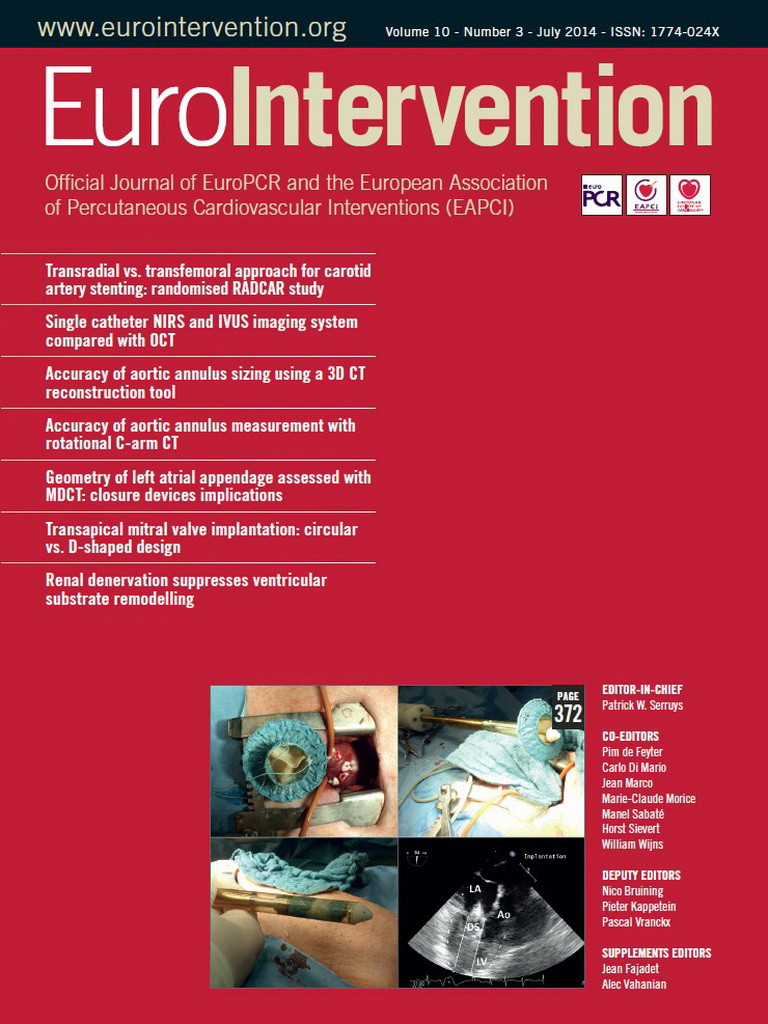NEWS
■ The newly appointed EAPCI Board under the leadership of Stephan Windecker has been announced at the EAPCI General Assembly with President-elect Michael Haude, Secretary Andreas Baumbach and Treasurer Javier Escaned.
■ At the EAPCI General Assembly during EuroPCR 2014, Past-President Jean Fajadet announced that 1,248 new members have joined the EAPCI in the last 12 months (May 2013-2014), a record.
■ The EAPCI has currently 5,762 members, with Italy having the greatest representation –449– followed by Germany with 438, India with 352, Egypt with 324 and the UK with 313.
EAPCI Focus on the Working Group for Catheterisation and Percutaneous Coronary Interventions of the Cardiology Society of Serbia
An interview with the President, Milan A. Nedeljkovic
What does the EAPCI membership mean for a national society?
Thanks to the EAPCI, our working group is able to promote Serbian interventional cardiology at EuroPCR through our chaired dedicated session, sharing with the European community our most educational cases. We are also very proud to be one of the founding member countries in the “Stent For Life” initiative. Through the many educational tools provided by the EAPCI - such as EuroIntervention and the textbook - we are able to develop further our knowledge and skills in our profession.
What are the current issues related to the national society?
Founded in 1955, The Serbian Society of Cardiology encompasses 17 working groups (WGs) with 848 registered members. Our WG for interventional cardiology is one of most prominent and dynamic of them, having 138 members, 53 of whom are also members of EAPCI.
Our WG represents 13 centres practising interventional cardiology and 23 cathlabs with more than 70 senior resident operators and dozens of very talented young fellows. Six of these centres - working 24/7- are located in the capital city of Belgrade covering a population of around two million. The other labs are evenly distributed throughout the rest of the country, covering around seven and a half million people. Despite increasing financial difficulties due to last year’s difficult public finance situation, we continue to increase the number of procedures through the enormous and enthusiastic effort of our dedicated staff throughout the country. Last year 20,000 procedures were performed: of these, approx. 12,000 procedures were PCIs and more than 4,500 were primary PCIs. The number of primary PCIs is rising each year, again the result of the devotion of our entire organisation. Serbia was one of the founding members of the “Stent For Life” initiative signed in Barcelona in 20091.
The DES penetration rate in Serbia has fallen to around 16% due to financial considerations; we must face this everyday in our practice as we try to employ DES in the most rational way in order to save them for those who need them most.
Our international interventional meeting, called BASICS +, begun in 2005, is now recognised worldwide and is one of the largest meetings of its kind in this region of Europe2,3. Last April we organised the eighth edition and hope this tradition will continue in the future. We are also hoping to introduce new technologies that are well accepted worldwide, like TAVI and left atrial appendage occluders but, once again, it is very difficult to introduce these in routine practice with our health budget restrictions. Still, we strive to overcome every difficulty and be equal competitors in the noble race for the wellbeing of our patients here in Serbia, as is the case in the rest of Europe.
References

Milan A. Nedeljkovic, President of the Working Group for Catheterisation and Percutaneous Coronary Interventions of the Cardiology Society of Serbia
![]()
President: Milan A. Nedeljkovic
President-elect: Siniša Stojkovic
Contact details: [email protected]
Website: http://www.uksrb.org/
Upcoming annual meeting: 20th Congress UKS 2015
Founded: 1955 (Serbian Society of Cardiology)
Members: 138 interventional members from 23 cathlabs
EAPCI members: 53

